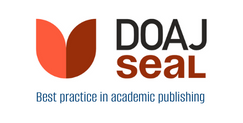Article | Open Access
The Effect of Transport Accessibility on the Social Inclusion of Wheelchair Users: A Mixed Method Analysis
| Views: | 7752 | | | Downloads: | 5005 |
Abstract: In recent years the accessibility of London buses has improved with the introduction of ramps and wheelchair priority areas. These advances are meant to remove physical barriers to entering the bus, but new conflicts have arisen particularly over the physical space aboard. We aimed to research the barriers faced by wheelchair users in public transport using a mixed methods approach to establish the breadth of issues faced by wheelchair users. To this end we quantified the push-force used alight a bus and a study to understand the coping mechanisms used by people to propel up a ramp. This quantitative approach found push forces which resulted in a load of 2 to 3 times body weight being transferred through people’s shoulders, forces which can be directly linked to shoulder injury. This could disable the user further, preventing them from being able to push their wheelchair. Alongside the quantitative study, we conducted qualitative research comprising of a number of in-depth interviews with wheelchair users about the barriers they face in public transport. Our main claim, highlighted through this interdisciplinary collaboration, is that proposed ‘solutions’ to accessibility, such as ramps, often generate problems of their own. These barriers can affect the life of wheelchair users, impacting on their confidence and causing social isolation. These can be long-term in nature or immediate.
Keywords: accessibility; disability; interdisciplinarity; public transport; science and technology studies; Transport for London; wheelchair
Published:
© Raquel Velho, Catherine Holloway, Andrew Symonds, Brian Balmer. This is an open access article distributed under the terms of the Creative Commons Attribution 4.0 license (http://creativecommons.org/licenses/by/4.0), which permits any use, distribution, and reproduction of the work without further permission provided the original author(s) and source are credited.




